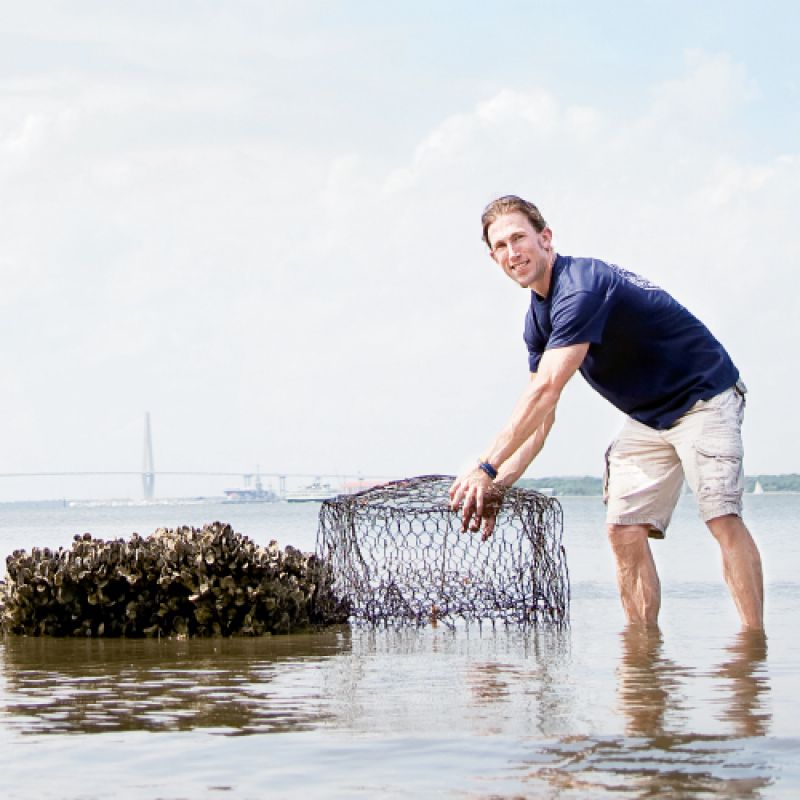
Collecting genetic samples from horseshoe crabs breeding under a full moon, talking to locals about the invasion of Asian tiger shrimp, and managing grants to support work on natural resource management projects such as artificial oyster reef construction: these are activities that occupy the days of marine scientist Dr. Peter Kingsley-Smith. Drawn to the Holy City in 2008 by its history, music scene, and a job with the S.C. Department of Natural Resources, the native of England shares a glimpse into his world.
CM: Why did you become a marine scientist?
PKS: As a kid, my grandfather often took me to tide pools to look for marine organisms. At night, he told my sister and me stories with these critters as characters. This sparked my interest, but even before that I was into looking for animals outdoors. One of my earliest photos is of me picking worms from the mud.
CM: What does your work with oyster habitats involve?
PKS: We create intertidal oyster reefs using building blocks ranging from bagged or loose oyster shells to concrete oyster castles to unwanted crab pots. These provide habitat for other organisms, filter our waters, and protect shorelines against erosion. I often work with volunteers to build the reefs, which is really rewarding—you know if they are giving up their time, then they are invested in our mission.
CM: Why are you monitoring local horseshoe crab populations?
PKS: There’s a part of the horseshoe crab’s immune system that the medical industry uses to detect whether or not instruments are clean. The industry bleeds the crabs, then returns them alive to the beaches. We want to make sure they are being sustainably harvested (the industry does, too). But also, the females lay their eggs on beaches. High in energy and nutrition, the eggs are important sources of food, particularly for migratory shorebirds.
CM: What’s the latest on the invasion of Asian tiger shrimp in area waters?
PKS: There’s concern that they may have a big impact on native shrimp populations, either by competing for resources or feeding on them directly. In June, we had a report from the public of the smallest tiger shrimp seen in U.S. waters, which leads us to believe that they are now established here and reproducing.
CM: You’re a competitive dragon boater?
PKS: Yes, I paddle with Dragonboat Charleston [which promotes wellness among cancer survivors] every Saturday and help coach and steer teams within the organization. Some mornings I’ve thought, “Maybe I’ll stay in bed,” but then I think if folks in chemo can get up and go paddle, I have no excuse for not joining them.
Works: In SCDNR’s Marine Resources Division as associate marine scientist and shellfish research section manager
Lives: James Island with girlfriend Michelle Martin and their lab-terrier puppy, Lucy
Lesser-known talent: He plays guitar and piano and has a penchant for classic rock.
Favorite place to watch English football: At the home of the Newcastle United Football Club: St. James Park, Newcastle-upon-Tyne, England